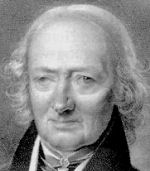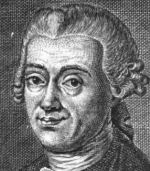Bode Titius
In the 18th century, two astronomers, Johann Bode and Johann Titius, reported a numerical
sequence into which the sizes of the planetary orbits fit. At the time the rule was recognized,
there were only six known planets; Mercury, Venus, Earth, Mars, Jupiter and Saturn.
Textbooks usually remark on the Bode-Titius sequence casually, noting that many astronomers dismiss it as mathematical slight of hand. In any event, astronomers note the following points, which we must keep in mind: The rule hypothesized a planet between Mars and Jupiter, which turned out to be where the asteroid belt is. It also hypothesized a planet out from Saturn, which turned out to be Uranus, but Neptune and Pluto don't fit the pattern very well. Pluto has an especially irregular orbit which crosses that of Neptune, and is askew from the plane on which the planetary orbits closely lie (the ecliptic). Generating the Bode-Titius Sequence: 1. Orbit: From left to right, make ten columns and number them. 2. Scaling: Under orbit #1 write 0, under #2 write 3. For the rest, double the previous (6, 12, 24...) 3. Add 4: In the next row, add 4 to the number above it for each column. 4. Divide by 10: In the next row, divide the number above by 10.
5. Compare: compare the numbers in the last row to the known orbital radii of the planets (in AU's).
The numbers match the spacing of the inner planets very well but the correlation diminishes in the outer solar system. Pluto represents a great divergence from the pattern, a 48.8% difference. |

